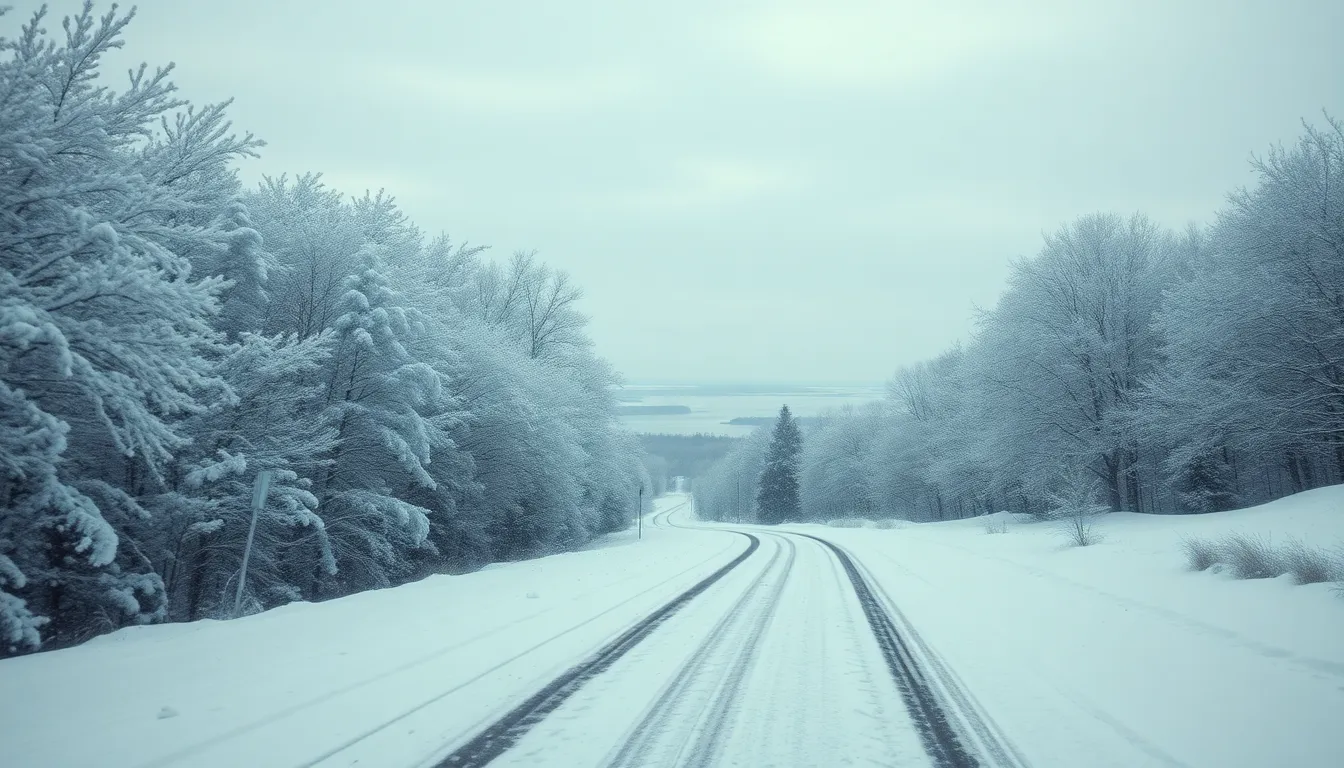When winter rolls around in Buffalo, it’s not just the snowflakes that fall; it’s the excitement of lake effect snow warnings. Picture this: fluffy white snow tumbling from the sky, transforming the city into a winter wonderland. But wait—this isn’t your average snowfall. Lake effect snow is like Mother Nature’s way of throwing a surprise party, and Buffalo is the guest of honor.
As the winds whip across Lake Erie, they pick up moisture and unleash it in a dramatic fashion. The result? Snowfall that can make even the most seasoned snowplow driver raise an eyebrow. So, grab your hot cocoa and a cozy blanket, because when those warnings hit, it’s time to embrace the chaos and enjoy the beauty of Buffalo’s winter magic.
Table of Contents
ToggleOverview of Lake Effect Snow
Lake effect snow occurs when cold winds move over warmer lake waters, particularly Lake Erie. This interaction causes the air above the water to gain moisture and warmth. As this moisture-laden air rises, it cools and condenses, forming clouds. Once these clouds move inland, they release heavy snowfall in localized areas.
Buffalo often experiences intense lake effect snow events, especially from November through March. During these months, significant snow accumulation can occur over short distances. One neighborhood may see a light dusting while another receives several feet of snow.
Reports indicate that lake effect snow can produce snowfall rates exceeding 2 inches per hour. Snowfall totals can vary widely, creating dramatic scenery throughout the region. Such conditions may lead to hazardous travel and challenges for snow removal efforts.
Conditions for lake effect snow typically require specific atmospheric situations. A cold air mass must flow over the relatively warmer waters of the lake. The combination of wind direction and temperature gradients plays a crucial role in the severity of snowfall.
Understanding the dynamics of lake effect snow helps residents prepare for winter weather. Awareness of forecasts and warnings enhances safety during snow events. As winter progresses, Buffalo’s residents often adapt their routines to cope with these unique snow patterns.
Understanding Lake Effect Snow Warning

Lake effect snow warnings are crucial for residents of Buffalo, especially during winter months. This phenomenon results in heavy, localized snowfall that significantly impacts daily life.
What Is Lake Effect Snow?
Lake effect snow occurs when cold air masses pass over warmer lake waters, specifically Lake Erie. This interaction causes the air to rise, gaining moisture in the process. Moist air cools and condenses, forming clouds capable of producing intense snowfall. Locations downwind from the lake experience this effect the most, leading to significant snow accumulation. Some areas may observe snowfall rates exceeding 2 inches per hour, highlighting the potential for hazardous conditions.
How Warnings Are Issued
Meteorologists use advanced weather models to assess conditions conducive for lake effect snow. Specific criteria, including temperature differences between the lake and air, inform their predictions. Once these conditions are confirmed, the National Weather Service issues warnings to alert the public. Residents receive these notifications via various channels, including local news, weather apps, and alert systems. Staying informed helps individuals prepare for potential challenges like travel disruptions or snow removal tasks.
Lake Effect Snow Warning Buffalo
Lake effect snow warnings play a crucial role in Buffalo’s winter season. These alerts inform residents about expected heavy snowfall that can disrupt daily activities.
Historical Context
Lake effect snow has shaped Buffalo’s history and culture. The winter of 1977 stands out with snow totals exceeding 200 inches, showcasing the area’s vulnerability. Notably, lake effect snow in Buffalo dates back to the city’s founding, influencing population patterns and local infrastructure. This phenomenon affects the Great Lakes region, making predictions vital for understanding seasonal weather changes.
Impact on Buffalo Residents
Localized snow accumulation leads to varied challenges for Buffalo residents. Neighborhoods may receive drastically different amounts, impacting travel and snow removal efforts. Commuters often face hazardous conditions, particularly during peak snowfall rates that can exceed 2 inches per hour. Schools may close or delay openings, while businesses adjust operations to accommodate weather-related disruptions. Staying informed through weather channels enables individuals to prepare efficiently, minimizing disruptions in daily routines.
Safety Tips During a Snow Warning
Staying safe during a snow warning requires preparation and awareness. Ensure that you have an emergency kit stocked with essentials like food, water, and a flashlight. Keep your vehicle equipped with items such as blankets, a first aid kit, and a snow shovel to navigate any unforeseen circumstances.
Monitor weather updates from reliable sources like the National Weather Service. Knowing when the snow is expected to start and how much to anticipate helps in planning. Dress in layers, covering exposed skin to protect against cold temperatures and wind chill.
Drive cautiously if travel is necessary. Reducing speed and maintaining a safe distance from other vehicles minimizes the risk of accidents during poor road conditions. Avoid sudden movements; gentle steering and braking assist in maintaining control on slippery surfaces.
Stay indoors whenever possible. Limited travel reduces risks when conditions worsen. If anyone experiences power outages, battery-operated lanterns and portable chargers provide necessary light and communication.
Keep an eye on local news for information on road conditions and snow removal efforts. Local agencies prioritize snow clearance on major roads and highways, while residential areas may require additional attention later. If snow accumulates significantly, assist neighbors who may need help with shoveling or accessing essential services.
In case of severe conditions, communicate with family members to ensure everyone stays informed and safe. Establishing a plan for snow days—how to connect, share resources, or keep in touch—ensures readiness.
Heeding these guidelines enhances safety during a lake effect snow warning in Buffalo. Adapting quickly to changing conditions can minimize the impact of severe winter weather on daily life.
Lake effect snow is a significant part of Buffalo’s winter landscape. Its unique characteristics create both beauty and challenges for residents. Staying informed about weather conditions and warnings is crucial for navigating the impact of these snow events.
By preparing adequately and following safety recommendations, individuals can mitigate risks associated with heavy snowfall. Embracing the season while remaining vigilant allows residents to enjoy the charm of winter in Buffalo. With the right approach, they can turn potential disruptions into manageable experiences.



